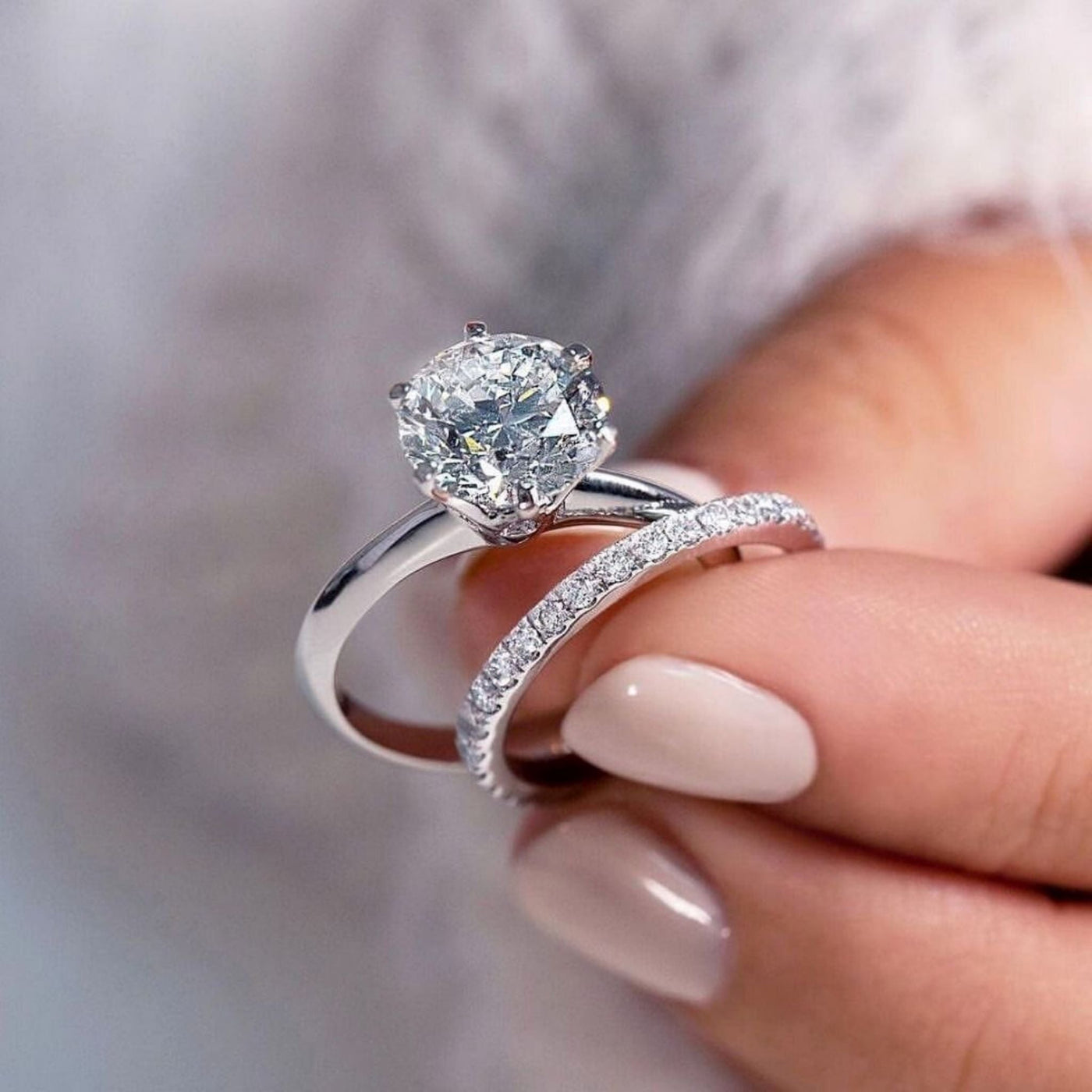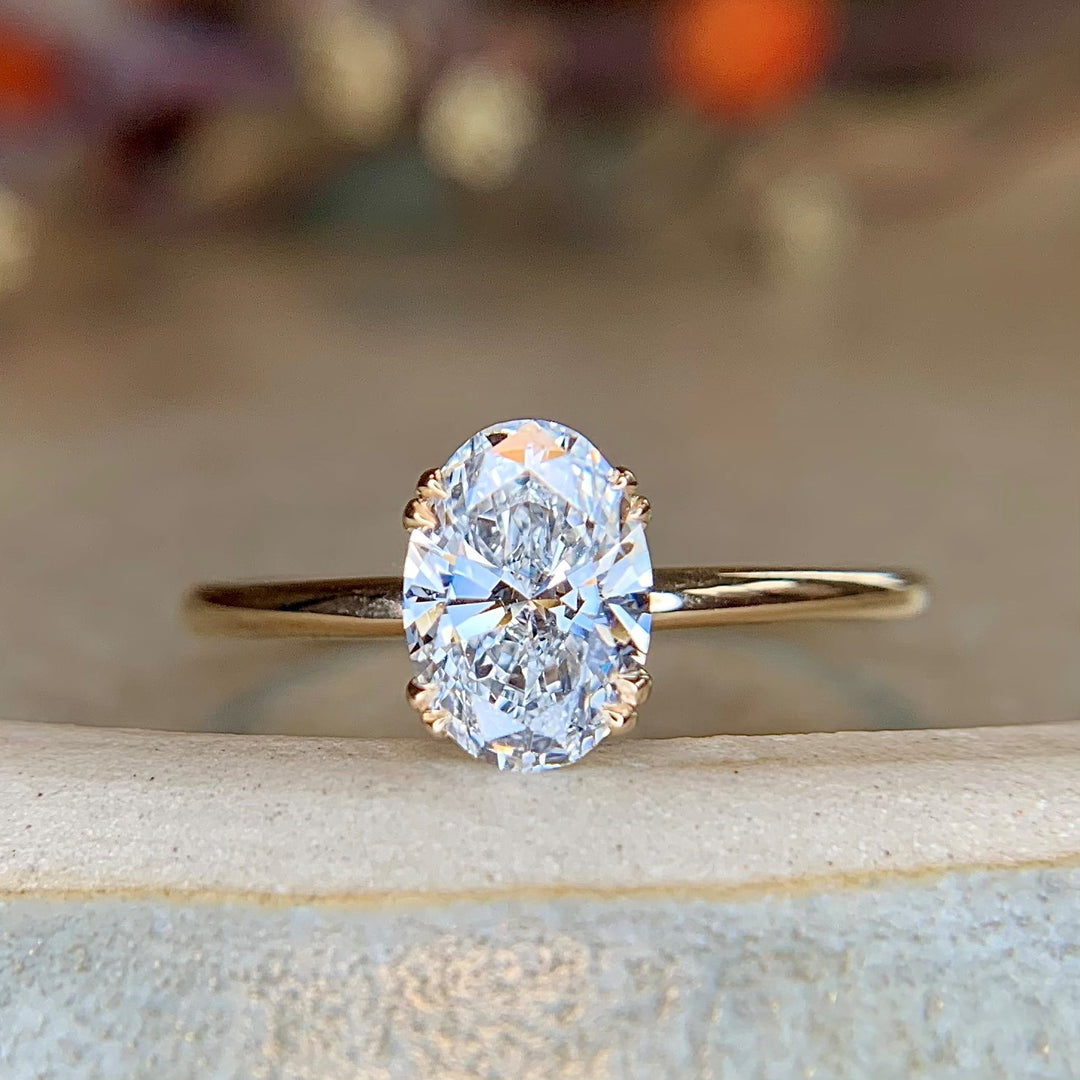Why Lab Grown Diamond Involvement Rings Are the Perfect Option for Eco-Conscious Couples
Lab-grown Diamond engagement rings provide a compelling alternative for couples who focus on sustainability. These rubies offer a striking alternative to standard extracted stones, significantly lowering ecological injury. They are produced using innovative strategies that assure both high quality and radiance. As understanding of moral sourcing expands, lots of couples are reconsidering their selections. What implications does this change have for the future of the Diamond market?

The Ecological Effect of Standard Diamond Mining
Although Diamond mining has long been commemorated for its appeal and eminence, the environmental consequences of traditional mining practices are increasingly concerning. The removal of rubies typically includes considerable land disturbance, resulting in logging and habitat loss for countless varieties. In addition, the process takes in substantial amounts of water, which can deplete neighborhood sources and adversely affect bordering areas. Poisonous chemicals used in mining procedures can infect close-by water resources, further jeopardizing both human populaces and wild animals.
The carbon footprint connected with transporting extracted rubies includes to the total ecological toll. The hefty machinery and devices required for mining operations contribute greatly to greenhouse gas discharges. As understanding of these problems expands, numerous consumers are beginning to doubt the sustainability of typical Diamond sourcing. This shift in point of view highlights the urgent requirement for even more eco-friendly alternatives, such as lab-grown diamonds, which promise to reduce the environmental effect while preserving the appeal and value of Diamond precious jewelry.
The Process of Creating Lab-Grown Diamonds
Lab-grown rubies are created with two primary methods: High Stress High Temperature Level (HPHT) and Chemical Vapor Deposition (CVD) The HPHT process simulates the natural conditions under which diamonds form in the Earth's mantle. It involves subjecting carbon to severe pressure and temperature, causing the crystallization of carbon atoms right into Diamond structures. On the other hand, the CVD technique permits the growth of diamonds in a regulated setting. This method uses a gas mixture consisting of carbon, which is invigorated to form plasma, making it possible for carbon atoms to down payment onto a substratum and expand layer by layer right into Diamond crystals.
Both approaches produce diamonds that are chemically and physically the same to natural rubies - lab grown diamond engagement rings. The selection of approach typically depends upon the preferred attributes and size of the last treasure. This ingenious approach to Diamond production not only offers a sustainable choice but likewise permits for higher openness in the sourcing of materials
Quality and Brilliance of Lab-Grown Diamonds
While several may presume that lab-grown rubies vary in high quality from their all-natural counterparts, they actually display equivalent brilliance and visual appeal. Lab-grown rubies are created utilizing sophisticated modern technology that reproduces the natural conditions under which diamonds form, leading to rocks that possess similar physical and chemical properties. These diamonds attain the same extraordinary clearness and color grading as extracted diamonds, making them equivalent to the naked eye.
In regards to luster, lab-grown diamonds usually display superior light efficiency due to their precision-cut elements. The strenuous quality control throughout manufacturing assurances that these diamonds meet high standards, boosting their aesthetic appeal. Additionally, they are offered in a variety of sizes and shapes, allowing couples to locate the ideal ring to match their personal design. Ultimately, lab-grown diamonds provide an exquisite combination of charm and high quality, making them an attractive selection for involvement rings.
Moral Considerations in the Diamond Market
As customers come to be significantly knowledgeable about the moral ramifications bordering Diamond sourcing, the conversation around the Diamond industry has actually moved significantly. Issues regarding problem diamonds, commonly referred to as "blood diamonds," have prompted ask for higher transparency and accountability in mining techniques. These diamonds are extracted in battle zone and sold to fund armed problem, increasing severe ethical concerns for consumers. Furthermore, the environmental influence of traditional Diamond mining has actually come under examination, with issues such as habitat destruction and water contamination regularly highlighted.
In reaction, lots of have turned to lab-grown rubies as a more ethical option. These stones are produced in controlled atmospheres, removing the threats related to mining. As a result, lab-grown diamonds appeal to consumers looking for to make linked here accountable selections that align with their values. The expanding demand for moral methods proceeds to reshape the Diamond sector, pushing for humane and lasting sourcing methods.
Cost-Effectiveness of Lab-Grown Diamonds
Lab-grown rubies use an engaging choice for consumers seeking cost-efficient interaction rings - lab grown diamond engagement rings. Priced significantly reduced than their all-natural equivalents, they provide excellent value a fantastic read for cash without sacrificing high quality or appearance. This price makes lab-grown diamonds an appealing alternative for budget-conscious pairs
Reduced Rate Point
Many pairs are uncovering that choosing for lab-grown Diamond engagement rings can substantially lower their overall prices without sacrificing quality or charm. These rubies usually set you back 30% to 50% much less than their mined equivalents, making them an attractive choice for budget-conscious consumers. The price advantage develops from lower production expenses and a much more reliable supply chain, which removes the expenses connected with mining. Consequently, pairs can spend in larger rocks or more intricate settings, improving the overall visual of their rings. This price not just enables for a more individualized choice but also aligns with the values of eco-conscious couples who prioritize sustainability while remaining monetarily savvy. Lab-grown rubies supply a best mix of style and economic climate.
Value for Cash
The cost-effectiveness of lab-grown diamonds expands beyond their first cost, supplying extraordinary value for money. Unlike natural rubies, lab-grown alternatives can be up to 40% less costly while keeping the very same physical and chemical residential or commercial properties. This cost allows pairs to buy larger or higher-quality rocks without exceeding their budget plans. Additionally, the resale value of lab-grown rubies is progressively improving, making them a much more viable option for future monetary considerations. Furthermore, lab-grown diamonds often feature lower moral and ecological expenses, supplying pairs with comfort. By choosing lab-grown rubies, eco-conscious couples not just conserve cash but likewise add to sustainable techniques, boosting their total value recommendation in the precious jewelry market.

Customization Options for Lab-Grown Engagement Rings
Exactly how can pairs ensure visit their website their engagement ring mirrors their special romance? Modification alternatives for lab-grown Diamond interaction rings offer an excellent option. Couples can select from numerous Diamond shapes, consisting of round, princess, or oblong, enabling them to choose a design that resonates with their individual visual.
Additionally, they can decide on the setup-- be it solitaire, halo, or vintage-inspired-- making sure the ring complements the Diamond's luster. Metal choices, such as white gold, yellow gold, or increased gold, better boost customization, satisfying private preferences.
Pairs can incorporate meaningful engravings, including a nostalgic touch that represents their bond. With these considerable personalization choices, lab-grown Diamond involvement rings not just embody a pair's love however likewise show their worths, making them an ideal selection for eco-conscious partnerships. Eventually, these rings become a real depiction of their one-of-a-kind trip together.
Regularly Asked Inquiries
How Do Lab-Grown Diamonds Contrast to Natural Diamonds in Worth?
Lab-grown diamonds commonly set you back 20-40% much less than natural diamonds, supplying similar quality and appearance. Their lower rate factor makes them an attractive alternative, specifically for budget-conscious consumers seeking sustainable and honest alternatives in jewelry.

Are Lab-Grown Diamonds More Durable Than Natural Diamonds?
Lab-grown diamonds have the very same physical and chemical residential or commercial properties as all-natural rubies, consisting of durability. Both types rack up an ideal 10 on the Mohs scale, making sure that lab-grown diamonds are just as resistant to scratching and damages.
Can Lab-Grown Diamonds Be Resold Easily?
Lab-grown diamonds can be marketed, but their market need varies contrasted to all-natural rubies. While some buyers value their honest origins, others might prefer all-natural choices, potentially impacting resale value and convenience of deal.
What Are the Treatment Recommendations for Lab-Grown Diamonds?
Lab-grown rubies require regular care to keep their sparkle. Cleansing with light soap and cozy water, making use of a soft brush, and preventing harsh chemicals will help protect their shimmer and integrity for many years to come.
Are There Any Accreditations for Lab-Grown Diamonds?
Lab-grown rubies can be licensed by trustworthy organizations such as the Gemological Institute of America (GIA) and the International Gemological Institute (IGI) These certifications ensure adherence, authenticity, and top quality to sector standards for lab-created gems.
Both methods generate diamonds that are chemically and literally identical to natural diamonds. Lab-grown rubies are developed utilizing advanced technology that replicates the all-natural conditions under which diamonds develop, resulting in rocks that possess identical physical and chemical properties. Lab-grown diamonds generally set you back 20-40% less than natural diamonds, using similar high quality and look. Lab-grown diamonds possess the exact same physical and chemical buildings as all-natural diamonds, including toughness. Lab-grown diamonds can be re-selled, but their market need differs contrasted to natural diamonds.